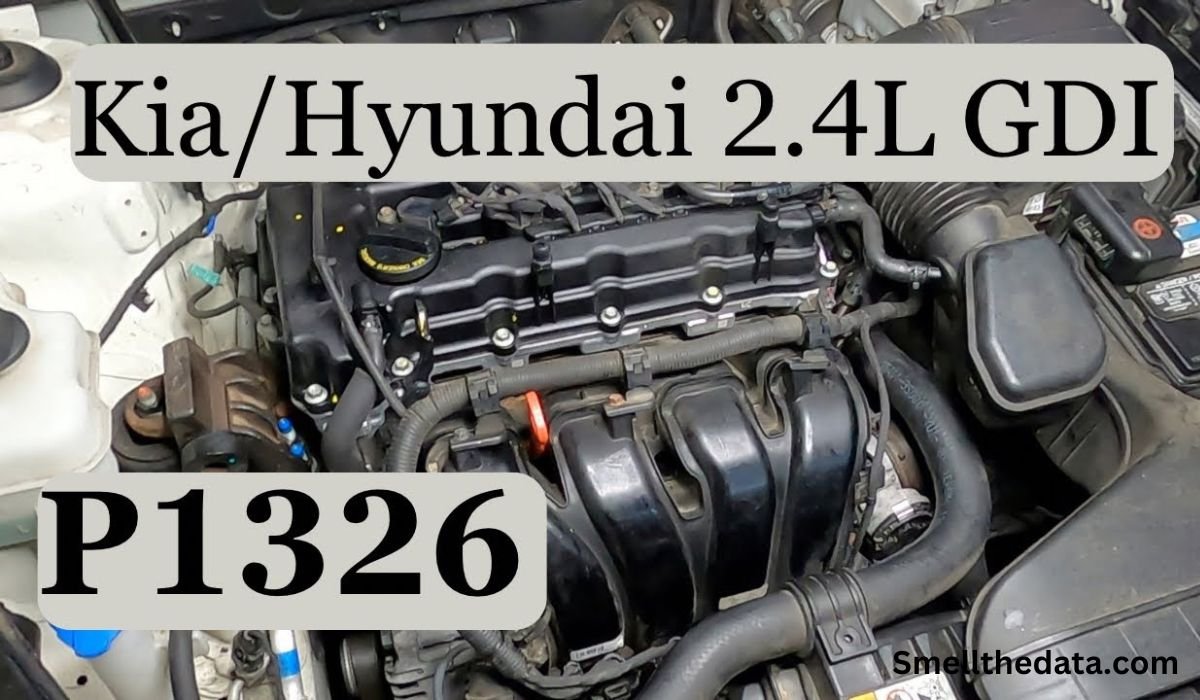Introduction
Have you ever been frustrated by your car’s engine acting up unexpectedly? It can be alarming when a warning light flashes on your dashboard, especially if it’s a code like P1326. This code is particularly common in Hyundai and Kia vehicles and signifies a specific engine issue. In this article, we’ll explore what P1326 means, its potential causes, and how you can address the problem effectively.
Part 1: Understanding P1326
Definition
The P1326 code refers to a malfunction detected in the Knock Sensor Detection System (KSDS) in Hyundai and Kia vehicles. This system is crucial for ensuring your engine runs smoothly and efficiently. The KSDS monitors engine knocking or pinging, which can cause damage if not managed properly. When the system detects an abnormality, it triggers the P1326 code.
Knock Sensor Detection System (KSDS)
The KSDS consists of a knock sensor and its associated circuitry. The knock sensor is designed to detect engine knock, a phenomenon where the air-fuel mixture in the engine’s cylinders ignites prematurely. This can lead to poor engine performance and increased wear. The KSDS helps the engine control module (ECM) adjust engine timing to prevent damage.
Symptoms of P1326
If your vehicle’s OBD-II system detects a P1326 code, you might notice several symptoms, including:
- Engine Misfires: The engine may run unevenly or misfire.
- Reduced Performance: You might experience a drop in power and acceleration.
- Increased Fuel Consumption: A malfunctioning KSDS can cause the engine to consume more fuel than usual.
- Unusual Engine Noises: Knocking or pinging noises from the engine may be more noticeable.
Part 2: Common Causes of P1326
Knock Sensor Malfunction
One of the primary causes of the P1326 code is a malfunctioning knock sensor. Issues may include:
- Physical Damage: The sensor may be damaged due to heat or debris.
- Electrical Faults: Problems with the sensor’s wiring or connections can affect its performance.
- Sensor Sensitivity: A faulty sensor may not accurately detect engine knocking.
Engine Mechanical Problems
Engine problems such as pre-ignition or detonation can trigger the P1326 code. These issues can cause the engine to run inefficiently and put additional stress on the knock sensor.
Wiring and Electrical Issues
Problems with the wiring or electrical connections related to the KSDS can lead to the P1326 code. Faulty or damaged wires can disrupt communication between the sensor and the ECM.
Fuel Quality Issues
Using low-quality or contaminated fuel can affect engine performance and contribute to the P1326 code. Poor fuel quality can cause knocking and other engine issues.
Part 3: Diagnosing P1326
Using an OBD-II Scanner
To diagnose the P1326 code, use an OBD-II scanner to read and interpret the code. The scanner will provide you with detailed information about the fault and help pinpoint the issue.
Inspecting the Knock Sensor
Check the physical condition of the knock sensor. Look for signs of damage or wear. Ensure that the sensor is properly installed and secure.
Testing the Knock Sensor Circuit
Test the electrical circuit associated with the knock sensor. This involves checking for continuity and ensuring that the sensor receives the correct voltage.
Checking for Engine Mechanical Issues
Inspect the engine for any mechanical problems that might be causing the P1326 code. This may involve checking for pre-ignition or detonation and addressing any underlying issues.
Part 4: Resolving P1326
Replacing the Knock Sensor
If the knock sensor is faulty, replacing it is often necessary. Follow the manufacturer’s guidelines for removing and installing the new sensor.
Addressing Engine Mechanical Issues
Repair or replace any engine components that are causing performance issues. This may involve adjusting the engine timing or addressing any pre-ignition problems.
Checking Fuel Quality
Ensure that you use high-quality fuel and avoid contamination. Regularly maintain your fuel system to prevent issues related to fuel quality.
Professional Assistance
If you are unable to resolve the issue on your own, seek professional help from a qualified mechanic. They can provide a more thorough diagnosis and perform necessary repairs.
You May Also like: What’s New in Tesla’s 2024.14.8 Software Update?
Conclusion
In summary, the P1326 code signifies a problem with the Knock Sensor Detection System in Hyundai and Kia vehicles. Understanding its causes, symptoms, and how to diagnose and resolve the issue can help you maintain your vehicle’s performance and prevent further damage. By addressing the problem promptly and seeking professional assistance if needed, you can ensure your vehicle remains in optimal condition.
FAQs
What does the P1326 code mean?
- The P1326 code indicates a malfunction in the Knock Sensor Detection System in Hyundai and Kia vehicles.
What are the symptoms of a P1326 code?
- Symptoms include engine misfires, reduced performance, increased fuel consumption, and unusual engine noises.
How can I diagnose a P1326 code?
- Use an OBD-II scanner to read the code, inspect the knock sensor, test the sensor circuit, and check for engine mechanical issues.
What are common causes of the P1326 code?
- Common causes include a malfunctioning knock sensor, engine mechanical problems, wiring issues, and poor fuel quality.
How can I fix a P1326 code?
- Solutions include replacing the knock sensor, addressing engine mechanical issues, using high-quality fuel, and seeking professional assistance if needed.











